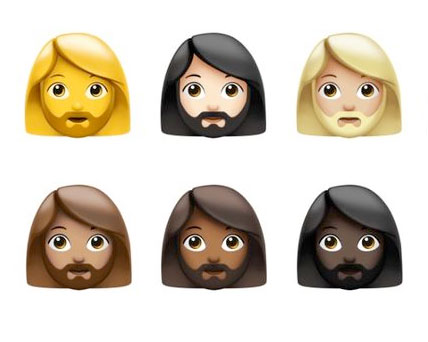I got a confusing message on my iPad yesterday. Apparently, my tablet had upgraded itself while I was asleep, and wanted to brag about it in the morning.
iPadOS 14.5 adds support for AirTag and introduces separate skin tone variations for emoji with couples. Siri adds more diverse voice options, and App Tracking Transparency lets you control which apps are allowed to track your activity across other companies’ apps and websites.
I generally dislike the idea of mechanical devices changing how they operate while I’m asleep, but that’s the world we live in now. The science fiction books I read as a kid, and the science fiction movies I watched back then, had certainly provided sufficient warning that this would eventually happen — although they didn’t specifically suggest that it would take place between the hours of midnight and 2am.
What my iPad didn’t explain to me, while bragging about the update, is what it meant by “separate skin tone variations for emoji with couples.”
Machines are getting more clever at things like upgrading themselves when we’re not looking, but they have a lot to learn in terms of clarifying their actions in half-way coherent English. (Yes, I understand they are manufactured in China, and English is not their first language. But that’s no excuse, in my book.)
Once upon a time (not so very long ago) an emoticon was a cute and unassuming combination of key strokes that you could include in an email, to let your intended recipient know how you were feeling about the message:
:)
…or:
:(
…or maybe:
:P
After a while, the emoticons got a bit more complicated. Like, this one for Santa Claus:
*<|:-)
… and this one, for Homer Simpson:
~(_8^(|)
Turned out these clever arrangements of ordinary keystrokes were too abstract for our machines to understand, however, so the iPads and other devices convened a conference in Japan and invented “emoji” — meaning, literally, “picture words” in Japanese — using as their basic template the universally-recognized, yellow “Smiley Face”.
The fact that these were originally Japanese icons explains why, even in English, the plural of “emoji” is “emoji”. The Japanese make great cars, but they have yet to grasp the idea of plural nouns.
Emoji first appeared on Japanese mobile phones in the late 1990s and gradually became a worldwide linguistic tool for machines talking to one another, due mainly to their ability to be understood by machines of varying ages and intellectual abilities. And because they were based on the time-tested and well-loved “Smiley Face”, emoji were always yellow. Even when emoji faces and combinations began to look more like realistic humans, the default color remained “yellow”.
Yellow is not cute enough, in 2021. Our machines now want us to pick politically correct colors.
When we want to include an emoji to represent a same-sex couple, for example, we need to choose the right hair color and skin tone. Apparently, yellow doesn’t hack it any longer.
Even Jesus is no longer yellow. We have to pick his hair and skin color.
(We cannot yet pick blue eyes, however. Next update, I suppose… But who ever saw a Jesus with blue eyes? Not me.)
I am a bit disturbed by this update, however. It appears that the Cat emoji and the Dog emoji will still remain yellow. That doesn’t seem fair, somehow.
And the very popular “Thumbs Up” icon will remain yellow for the time being.
We’re still stuck with a limited selection of “object” emoji. We have only ‘red’ wine, for example, and a ‘red’ sports car. Where’s the variety with which life is supposedly spiced? A person is inclined to conclude that our machines don’t really care about human happiness.
Of course, our machines have a lot of time on their hands, with nothing much going on while we’re sleeping, so I have no doubt we will be seeing a continuous stream of emoji updates, far into the future. Probably, a time will come when I will be able to pick an emoji that looks exactly like me.
Or better yet, exactly like I want to look.
Underrated writer Louis Cannon grew up in the vast American West, although his ex-wife, given the slightest opportunity, will deny that he ever grew up at all. You can read more stories on his Substack account.





